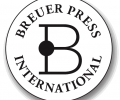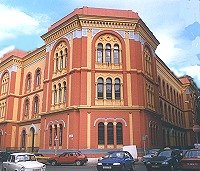Getting past the Black Holes of Memory The most prominent force in the founding of Budapest were the Jews who lived in that city. They were prominent in the intellectual force, the economic and the cultural energy behind what was once one of the most vibrant cities of Europe. This of course did not prevent Hungarian collaboration with the Nazis in carting off the Jewish population to the death camps – even as the Red Army stood at the doors of Budapest. A Jewish story. Jews arrived in Buda as early as the eleventh century. By the end of the fourteenth century, they had become the largest Jewish community in Hungary. When the Turkish army entered the city, most of the Jewish population fled westward into Austrian-controlled territory. But, as the years went by, the community renewed itself under Turkish rule. The Jews paid high taxes, as was customary in the Ottoman Empire, but they were not persecuted and their numbers grew: by 1580, Buda had some 800 Jews. They worked in commerce, the production of textiles, and embroidering uniforms. The Austrians returned to Buda in 1686. The Jewish quarter was set on fire and the Jews expelled from the city. They were allowed to return in 1703, but restrictions and prohibitions were imposed on them. n 1840, the prohibitions and restrictions imposed on the Jews of the city were cancelled and the Hungarian population agreed to accept the community. The Jews became social and political leaders, taking part in the intellectual and cultural life and in the construction and development of independent Hungary. The nineteenth century and beginning of the twentieth century were the golden age of both Budapest and the citys Jews. Their numbers increased greatly and they continued to be a prominent part of economic and intellectual life. When the Germans entered Budapest in March 1944, they came with an orderly work plan to deal with the Jews, a plan that was implemented under the personal management of Adolf Eichmann. At first the Jews were assembled in 2,000 pre-designated houses. Eichmann’s decision to expel the Jews of Budapest in July and August were postponed while he negotiated with the Jewish Agency for the lives of the Jews of Budapest. Eichmann demanded 10,000 trucks for the German army in exchange for the Jews. The Jewish Agency leadership, headed by Ben Gurion debated the issue in a secret meeting held in Jerusalem. Moshe Sharett was sent to Turkey to continue the negotiations, while Swiss diplomat Charles Lutz and Swedish diplomat Raoul Wallenberg worked in Budapest to save as many Jews as possible. At the end of August, Eichmann had to leave the city. The deportation of the Jews was delayed again. However, on August 15th, the members of Arrow Cross, the Hungarian Nazi Party, took over the government and immediately began an anti-Jewish terror campaign. Eichmann returned to the city in October and transferred the Jews from the houses in which they had been concentrated to two main ghettos: the central ghetto, in which about 70,000 Jews with Hungarian citizenship were concentrated, and the international ghetto, housing about 100,000 Jews who had received the protection of a neutral country, with the aid of real or forged documents. On November 15th, thousands of Jews from the central ghetto were sent to the front to dig trenches. Those who survived, 7,000 people, were marched to the Mauthausen death camp. Many were murdered on the way. At the beginning of January 1945, the advance of the Red Army forced the Germans to abandon the city. In the next ten days, until the Russians entered the city, the Arrow Cross launched a murderous hunt to track down the remaining Jews. Thousands were shot to death the bodies thrown into the Danube. Of the Hungarian Jewish community only half survived the Holocaust. Most of the survivors scattered after after the war, immigrating to Israel and the West. Some remained in Budapest, a sad reminder of what was once a unique and proud community. Jewish tourism has recently promoted a Hungarian Jewish Museum in Budapest, but the real museum is in a little building in Safed where the Lustig family began to collect artefacts of Jewish life in Hungary in the 1980s. Housed in a little stone building beside the old Turkish governors palace in Safed, the museum is overflowing with artefacts and materials. For lack of space only a small portion of the collection is on display. The full article on Budapest’s Jewry will be published in the upcoming issue of ERETZ Magazine.
THE JEWISH WORLD
2005. november 27 20:26














